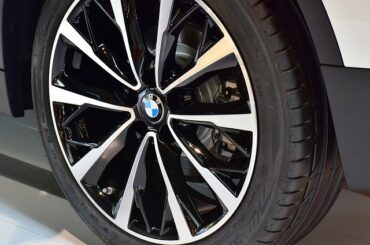For a good reason, twin turbo 4 cylinder engines have been gaining popularity in recent years. These engines provide a unique balance of power and efficiency, making them an attractive option for car enthusiasts who want the best of both worlds. These engines can provide increased power output by utilizing twin turbos without sacrificing fuel efficiency. This technology has become increasingly common in high-performance sports cars and more mainstream vehicles like SUVs and sedans. In this article, we will explore the advantages and challenges of twin turbo 4 cylinder engines and their potential for further development and innovation.
Contents
Mercedes-AMG M139 engine
The Mercedes-AMG M139 engine is a prime example of a high-performance twin turbo 4 cylinder engine. It is currently the world’s most powerful series-production four-cylinder engine, producing an impressive 416 horsepower and 369 lb-ft of torque. This is achieved through twin-scroll turbos, which work together to provide increased boost pressure and improve engine response.

In addition to its impressive power output, the M139 engine boasts several unique features that set it apart from other engines. For example, it features a “hot vee” design, which places the turbochargers inside the vee of the engine block. This helps to reduce turbo lag and improve throttle response, resulting in a more engaging driving experience.
The M139 engine also features a fully variable camshaft adjustment system, allowing precise control over valve timing and lift. This technology helps to improve both power and efficiency, allowing the engine to optimize its performance based on driving conditions.
BMW TwinPower Turbo engine
The BMW TwinPower Turbo engine is another example of a high-performance twin turbo 4 cylinder engine. It utilizes BMW’s proprietary TwinPower Turbo technology, combining twin-scroll turbos with direct fuel injection and variable valve timing to optimize power and efficiency. The engine is available in several BMW models, including the X1 xDrive28i, where it replaced the previously used 6-cylinder engine.

Compared to the Mercedes-AMG M139 engine, the BMW TwinPower Turbo engine has a lower power output, producing 228 horsepower and 258 lb-ft of torque. However, it can still provide impressive performance while maintaining a balance of efficiency. The engine’s design allows for smooth power delivery throughout the RPM range, making it well-suited for spirited driving and daily commuting.
One of the unique features of the BMW TwinPower Turbo engine is its use of a “twin-scroll” turbocharger. This design separates the exhaust gas flows from the cylinders to minimize interference between them, allowing for improved throttle response and faster spool-up of the turbochargers.
Applications in mainstream vehicles
Twin turbo 4 cylinder engines are not just limited to high-performance sports cars but are also used in more mainstream vehicles to improve performance and efficiency. One such example is the 2021 BMW X1, which is powered by a 2.0-liter four-cylinder engine that features BMW’s TwinPower Turbo technology. This engine produces 228 horsepower and 258 lb-ft of torque, providing ample power for everyday driving.
Using twin turbochargers in mainstream vehicles like the BMW X1 allows for more efficient use of engine power. By increasing the amount of air and fuel that can be burned in the engine, turbocharging can boost engine performance while maintaining fuel efficiency. Additionally, using advanced engine management systems and direct fuel injection can optimize fuel consumption and improve overall fuel economy.
In the case of the BMW X1, the TwinPower Turbo engine is paired with an eight-speed automatic transmission and all-wheel drive, providing a smooth and responsive driving experience. The engine’s variable valve timing and other advanced technologies also improve power delivery and overall performance.
Advantages and disadvantages
Twin turbo 4 cylinder engines have advantages and disadvantages that car enthusiasts and potential buyers should consider. On the positive side, these engines offer excellent power-to-weight ratios and can provide impressive power output for their size. Additionally, using twin turbochargers and advanced engine management systems can help optimize fuel consumption, resulting in better overall fuel efficiency.
Another advantage of twin turbo 4 cylinder engines is their compact size and weight, which can contribute to improved vehicle handling and balance. These engines can be particularly attractive for drivers who value agile and responsive driving characteristics.
However, there are also potential drawbacks to consider. One of the main concerns with twin turbo engines is their increased complexity, making them more difficult and expensive to maintain and repair. Additionally, the cost of developing and manufacturing these advanced engines can drive up the overall cost of the vehicle, making them less accessible to budget-conscious buyers.
Another issue to consider is the potential for turbo lag, which is the delay between the moment the driver presses the accelerator and the moment the engine responds with increased power. This can be a particular concern for drivers who value immediate and responsive acceleration.

Despite these potential drawbacks, twin turbo 4 cylinder engines are becoming increasingly popular in high-performance sports cars and more mainstream vehicles, thanks to their impressive power and efficiency characteristics. As with any technology, it’s important for buyers to carefully consider their priorities and preferences before making a purchase decision.
Future developments
The future of twin turbo 4 cylinder engine technology looks promising, with a number of potential developments on the horizon. One area of focus is integrating hybrid technology, which can further improve the already impressive efficiency of these engines.
Hybridization can take several forms, including using an electric motor to assist the engine during acceleration or incorporating regenerative braking technology to recapture energy that would otherwise be lost during braking. These advancements can help to improve overall fuel efficiency and reduce emissions, making these engines even more attractive to environmentally conscious consumers.
Another area of development is the use of electric turbochargers. These innovative devices use an electric motor to drive the turbocharger, which can provide more immediate and responsive power delivery without the traditional delay associated with turbo lag. Electric turbos also have the potential to improve efficiency by reducing the load on the engine and allowing it to operate more efficiently at low RPMs.
Twin turbo 4 cylinder
In conclusion, twin turbo 4 cylinder engines have become increasingly popular due to their impressive power and efficiency characteristics. Engines like the Mercedes-AMG M139 and the BMW TwinPower Turbo have set new benchmarks for performance and are becoming more prevalent in mainstream vehicles like the 2021 BMW X1.
While these engines have many advantages, including improved fuel efficiency and power output, they also have potential drawbacks, such as increased complexity and cost. However, advances in hybridization and using electric turbochargers could further improve these engines’ efficiency and responsiveness.
As the demand for more powerful and efficient vehicles grows, twin turbo 4 cylinder engines will likely become even more critical. Their potential for further development and innovation makes them an exciting area of focus for the automotive industry. We can expect to see continued advancements in this technology in future years.
More Posts :
Xavier Wulf’s 2023 Dodge Charger SRT Hellcat: Exploring the Rapper’s Love for Cars
Master the Schedule: 2023 Update on When Tow Trucks Come to Apartments with Power Insights






